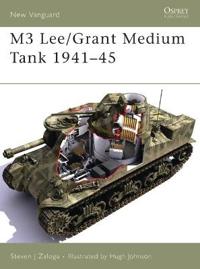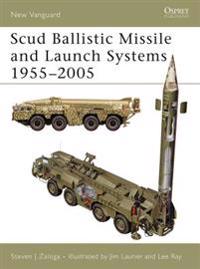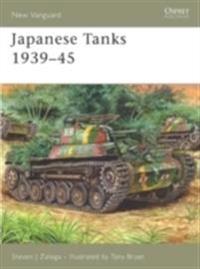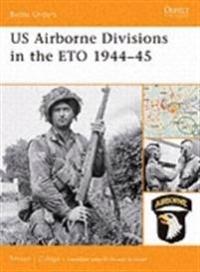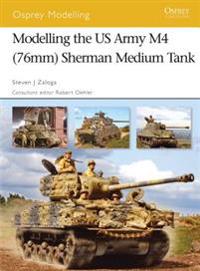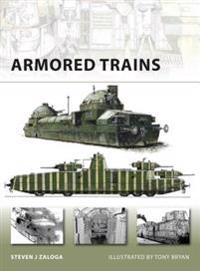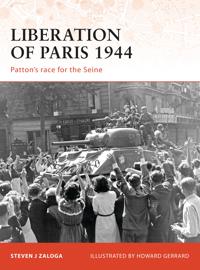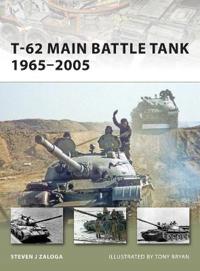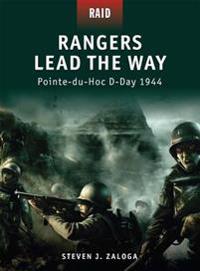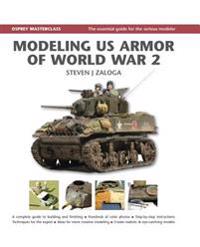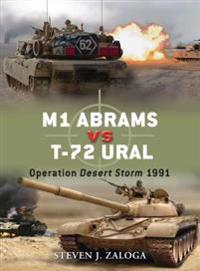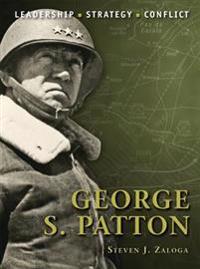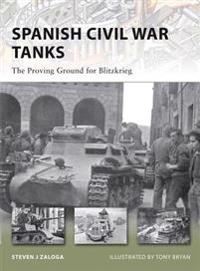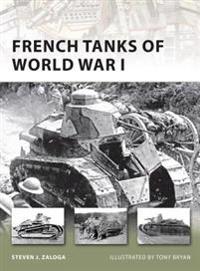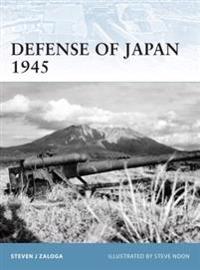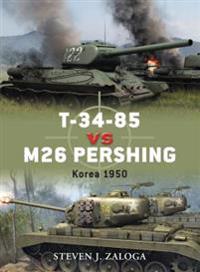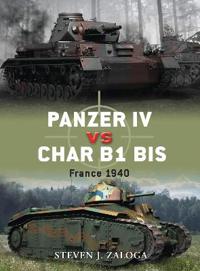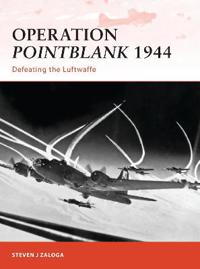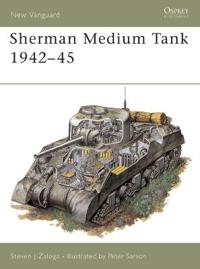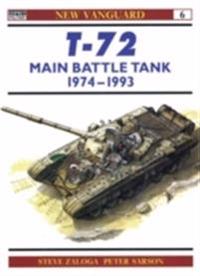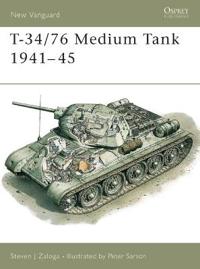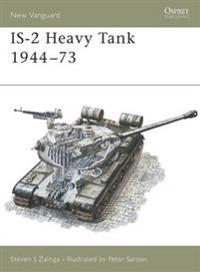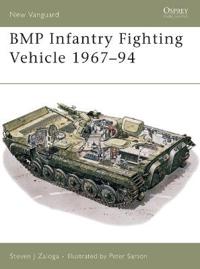M3 Lee/Grant Medium Tank 1941-45 (Häftad)
avSteven J. Zaloga
ISBN: 9781841768892 - UTGIVEN: 200508The highly successful 'stop-gap' M3 medium tank was designed in 1941, and as adequate turret casting facilities were not yet ready, the M3 used an unusual armament configuration patterned after a French tank. British lend-lease demands led to the design of a second turret type with the US version ca[...]
Scud Ballistic Missile and Launch Systems 1955-2005 (Häftad)
avSteven J. Zaloga
ISBN: 9781841769479 - UTGIVEN: 200602The Scud has become a symbol of the changing nature of warfare in the aftermath of the Cold War, as its original development was part of a Soviet plan to fight a nuclear war in the heart of Europe. When Iraqi armed forces were nearly helpless in the face of the Coalition forces in the 1991 Gulf War,[...]
Remagen 1945 (Häftad)
avSteven J. Zaloga
ISBN: 9781846030185 - UTGIVEN: 200610In the aftermath of the battle of the Ardennes in February 1945, the Allies began steps for the final assault into Germany. The Rhine represented the last major geographical barrier to the Allied advance into Germany. In the event, fortune smiled on the US Army when the 9th Armored Division unexpect[...]
Japanese Tanks 1939-45 (Häftad)
avSteven J. Zaloga
ISBN: 9781846030918 - UTGIVEN: 200708Contrary to popular belief, the Japanese Army widely employed tanks within the Pacific theater of war. This title details their key role in the conquests of Singapore and Malaya, as well as their later use in Burma, Saipan, and the Philippines, including in the amphibious assault of Corregidor. The [...]
US Airborne Divisions in the ETO 1944-45 (Pocket)
avSteven J. Zaloga
ISBN: 9781846031182 - UTGIVEN: 200703The delivery of entire divisions to battlefields behind enemy lines by parachute and glider was a unique feature of World War II. This book covers the mature phase of these operations from the tactical failures of night-time drops at D-Day, through the daylight jumps at Arnhem and the Rhine, to the [...]
Modelling the Us Army M4 (76mm) Sherman Medium Tank (Häftad)
avSteven J. Zaloga
ISBN: 9781846031205 - UTGIVEN: 2007-10The Sherman tank was the principal US and Allied tank of World War II - more Shermans were built than all German tanks combined. Not only were large numbers of Shermans manufactured, but a large number of variants emerged powered by different types of engines and with different types of hulls, turre[...]
Armored Trains (Häftad)
avSteven J. Zaloga
ISBN: 9781846032424 - UTGIVEN: 200801First seen during the American Civil War and later appearing in the Franco-Prussian War and the Boer Wars, the military use of the armoured train only came to the fore during World War I, reigning supreme on the Eastern Front. Deployed widely during Russian Civil War the technology spilt over into t[...]
Liberation of Paris 1944 (Häftad)
avSteven J. Zaloga
ISBN: 9781846032462 - UTGIVEN: 200804In July 1944 of World War II (1939-1945), Operation "Cobra" broke the stalemate in Normandy and sent the Allies racing across France. The Allied commanders ignored Paris in their planning for this campaign, considering that the risk of intense street fighting and heavy casualties outweighed the city[...]
Panther vs Sherman (Pocket)
avSteven J. Zaloga
ISBN: 9781846032929 - UTGIVEN: 200809In this book Steven J Zaloga offers a fascinating comparison of the combat performance of the two most important tanks involved in the crucial fighting of 1944, the Sherman and the Panther. Examining the design and development of both tanks, Zaloga notes the obvious superiority that the Panther had [...]
T-62 Main Battle Tank 1965-2005 (Häftad)
avSteven J. Zaloga
ISBN: 9781846033902 - UTGIVEN: 200908The Soviet Army hastily developed the T-62 in a struggle to compete against the rapid proliferation of NATO tanks in the 1960s. It was essentially a modification of the widely-manufactured T-55 tank with the addition of a new 115mm gun. Within the USSR itself, the T-62 was quickly superseded, but it[...]
Rangers Lead the Way (Pocket)
avSteven J. Zaloga
ISBN: 9781846033940 - UTGIVEN: 2009-09In the early hours of D-Day, 1944, a group from the US Army 2nd Rangers Battalion were sent on one of the legendary raids of World War II. The mission was to scale the cliffs overlooking Omaha beach and assault the German coastal artillery at Pointe-du-Hoc. It was thought that only a raid could ensu[...]
Modeling Us Armor of World War 2 (Inbunden)
avSteven J. Zaloga
ISBN: 9781846033988 - UTGIVEN: 200909The tanks and other armored fighting vehicles of the United States Forces in World War II have always been some of the most popular subjects for scale modellers. Now, renowned modeller and AFV expert, Steven J Zaloga, presents the definitive guide to modelling these famous fighting vehicles. Based a[...]
M1 Abrams Vs T-72 Ural (Pocket)
avSteven J. Zaloga
ISBN: 9781846034077 - UTGIVEN: 200908The Gulf War bore witness to a number of deadly encounters between these two great adversaries. Heavily armoured, highly mobile and capable of killing at over 2500m the M1 Abrams is, to this day, a veritable fighting machine. Superior to both Iraq's Soviet era T-55 and T-62 tanks, nearly all sources[...]
George S. Patton (Häftad)
avSteven J. Zaloga
ISBN: 9781846034596 - UTGIVEN: 201006George S. Patton Jr. was the iconic American field commander of World War II, and widely regarded as the US Army's finest practitioner of mechanized warfare. This title examines Patton's colorful life and leadership in three wars, with a concentration on his command in World War II. Despite his abil[...]
Spanish Civil War Tanks (Häftad)
avSteven J. Zaloga
ISBN: 9781846035128 - UTGIVEN: 201008The tanks used during the Spanish Civil War are not often examined in any great detail, and are often labeled as little more than test vehicles in a convenient proving ground before World War II. But, with groundbreaking research, armor expert Steven J Zaloga has taken a fresh look at the tanks depl[...]
French Tanks of World War I (Häftad)
avSteven J. Zaloga
ISBN: 9781846035135 - UTGIVEN: 201012This title examines the emergence of the first modern tank, the Renault FT. It is a little known fact that France fielded more tanks in World War I than any other army. However, France's early tanks suffered from poor mobility and armor compared to their contemporaries. Indeed, their initial use on [...]
Defense of Japan 1945 (Häftad)
avSteven J. Zaloga
ISBN: 9781846036873 - UTGIVEN: 201010In 1945, with her fleet destroyed and her armies beaten, the only thing that stood between Japan and an Allied invasion was the numerous coastal defence positions that surrounded the islands. This is the first book to take a detailed look at the Japanese home island fortifications that were construc[...]
T-34-85 vs M26 Pershing (Pocket)
avSteven J. Zaloga
ISBN: 9781846039904 - UTGIVEN: 201011A hotly-debated topic amongst tank buffs is of the relative merits of the Soviet and American tanks of World War II. Using recently revealed documents, Steven Zaloga sheds light on the crucial tank battles of the Korean War as the rival superpowers' finest tanks battled for supremacy. The Soviet-equ[...]
Panzer IV vs Char B1 Bis (Pocket)
avSteven J. Zaloga
ISBN: 9781849083782 - UTGIVEN: 201101The Battle of France in 1940 involved the first large-scale tank-against-tank battles in history. The massive clashes at Stonne, Hannant, and Gembloux involved hundreds of tanks on both sides, yet have faded from memory due to the enormity of the French defeat. This book examines two of the premier [...]
Operation Pointblank 1944 (Pocket)
avSteven J. Zaloga
ISBN: 9781849083850 - UTGIVEN: 2011-07Operation Pointblank was the code name for the United States Army Air Force's attempt to destroy German fighter capability through the use of daylight strategic bombing in advance of the D-Day landings. Launched in 1943, the operation immediately met with severe problems, most notably the horrible a[...]
Sherman Medium Tank (Häftad)
avSteven J. Zaloga
ISBN: 9781855322967 - UTGIVEN: 199305The M4 Sherman tank was the mainstay of the Western allies between 1942 and 1945. Fast and modern it was better than most of the tanks Britain had to offer. The American Chief of Staff claimed in November 1943 that it had been hailed widely as 'the best tank on the battlefield today'. However, by th[...]
T-72 (Häftad)
avSteven J. Zaloga
ISBN: 9781855323384 - UTGIVEN: 1993-09The Russian T-72 Ural tank is the most widely-deployed main battle tank of the current generation. Used by the armies of the former Warsaw pact and Soviet Union, it has also been exported in large numbers to many of the states in the Middle East. This book reveals the previously secret history behin[...]
T-34/76 Medium Tank, 1941-45 (Häftad)
avSteven J. Zaloga
ISBN: 9781855323827 - UTGIVEN: 199407The T-34 was the most influential tank design of World War 2. When first introduced into combat in the summer of 1941, it represented a revolutionary leap forward in tank design. Its firepower, armour protection and mobility were superior to that of any other medium tank of the period. This superior[...]
Josef Stalin Heavy Tanks, 1944-94 (Häftad)
avSteven J. Zaloga, Sarson&fromproduct=true">Peter ILL>Sarson
ISBN: 9781855323964 - UTGIVEN: 199402The Iosef Stalin tanks were the ultimate heavy tanks developed by the Soviet Union and were popularly called 'Victory tanks' due to their close association with the defeat of Germany in 1945. Yet in spite of their reputation, the Stalin tanks emerged from a troubled design, had a brief moment of glo[...]
BMP Infantry Fighting Vehicle, 1967-94 (Häftad)
avSteven J. Zaloga
ISBN: 9781855324336 - UTGIVEN: 199501The Russian BMP infantry fighting vehicle (IFV) was one of the most significant innovations in infantry tactics in the latter half of the 20th century. Built in response to the threat of nuclear warfare, it was the world's first IFV, providing the infantry squad with unprecedented firepower, mobilit[...]

